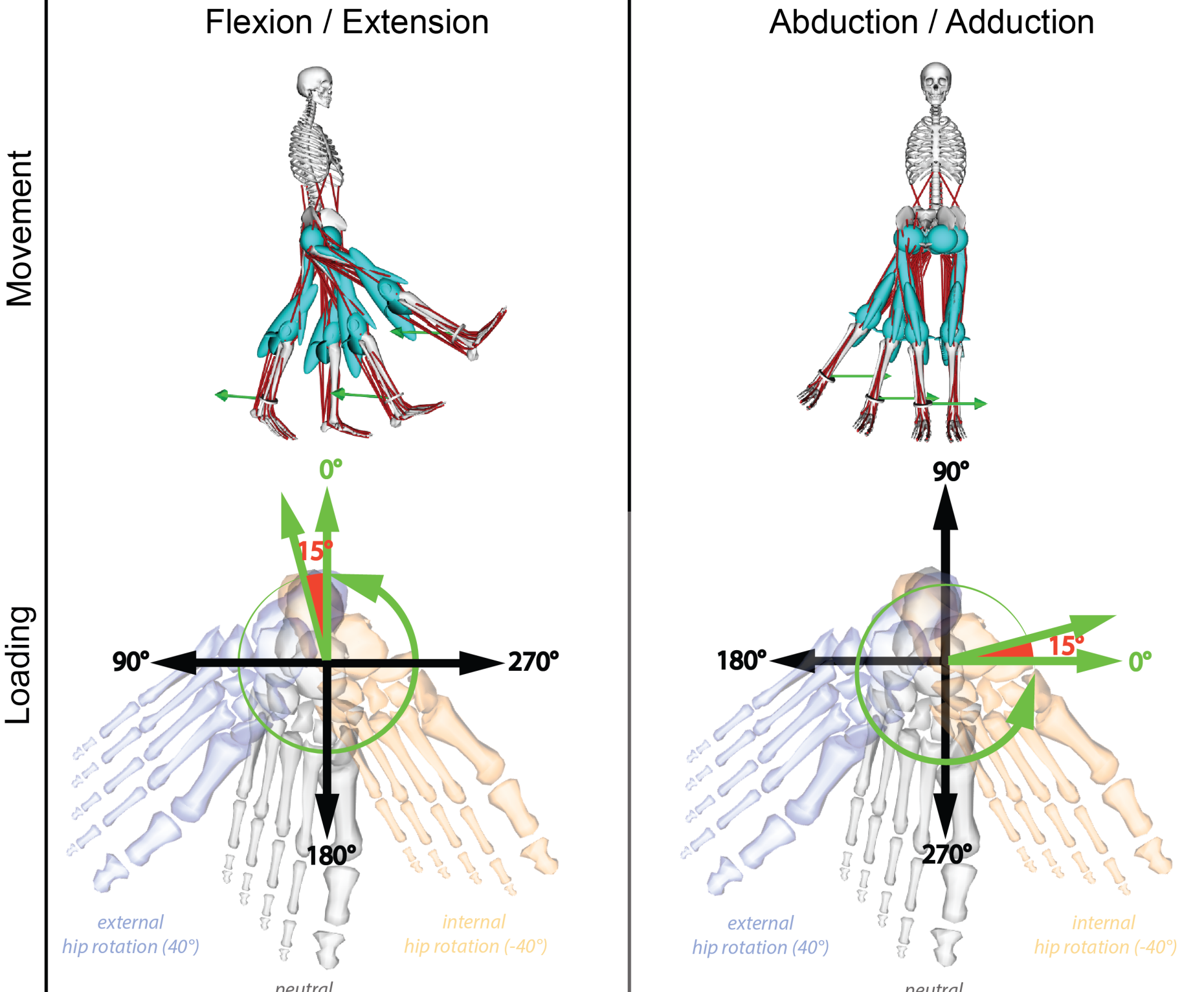Hip Exercise Modelling
Towards subject-specific strength training design through predictive use of musculoskeletal models

Abstract
Lower extremity dysfunction is often associated with hip muscle strength deficiencies. Detailed knowledge of the muscle forces generated in the hip under specific external loading conditions enables specific structures to be trained. The aim of this study was to find the most effective movement type and loading direction to enable the training of specific parts of the hip muscles using a standing posture and a pulley system.
In a novel approach to release the predictive power of musculoskeletal modelling techniques based on inverse dynamics, flexion/extension and ab-/adduction movements were virtually created. To demonstrate the effectiveness of this approach, three hip orientations and an external loading force that was systematically rotated around the body, were simulated using a state-of-the art Opensim model in order to establish ideal designs for training the anterior and posterior parts of the M. gluteus medius (GM).
The external force direction as well as the hip orientation greatly influenced the muscle forces in the different parts of GM. No setting was found for simultaneous training of the anterior and posterior part with a muscle force higher than 50% of the maximum. Importantly, this study has demonstrated the use of musculoskeletal models as an approach to predict muscle force variations for different strength and rehabilitation exercise variations.
external pageRead morecall_made
Downloadsupplementary data (ZIP, 173 KB)vertical_align_bottom
